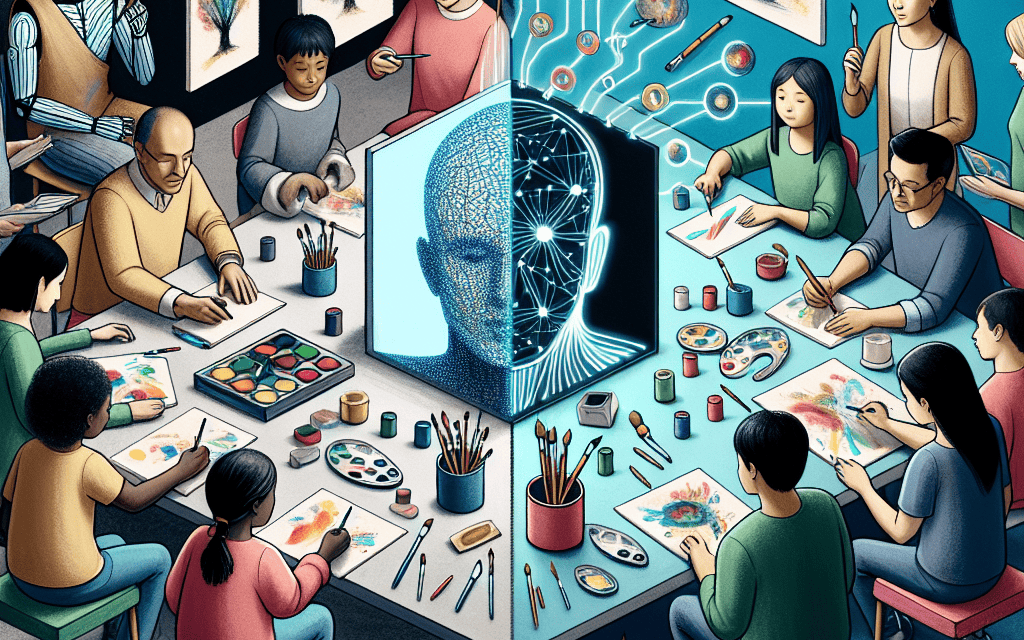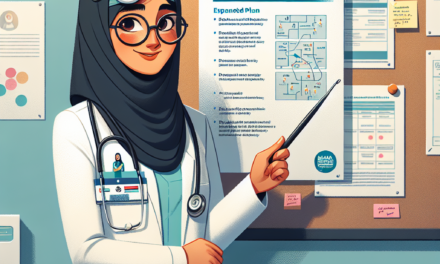The Impact of Creative AI on Art Therapy Practices
Art therapy has long been recognized as a powerful tool for healing and self-expression, allowing individuals to explore their emotions and experiences through creative processes. With the advent of artificial intelligence (AI), particularly in creative domains, the landscape of art therapy is undergoing a significant transformation. This article delves into the multifaceted impact of creative AI on art therapy practices, exploring its benefits, challenges, and future potential.
1. Understanding Art Therapy
Art therapy is a therapeutic practice that utilizes artistic expression as a means of communication and healing. It is grounded in the belief that creative expression can facilitate emotional release, self-discovery, and personal growth. Art therapists work with individuals of all ages, including children, adolescents, and adults, to help them process trauma, manage mental health issues, and improve overall well-being.
Key components of art therapy include:
- Creative Expression: Participants engage in various artistic activities, such as painting, drawing, sculpting, and collage-making, to express their thoughts and feelings.
- Therapeutic Relationship: The relationship between the therapist and the client is crucial, providing a safe space for exploration and healing.
- Process Over Product: The focus is on the creative process rather than the final artwork, allowing for a deeper exploration of emotions.
- Integration of Psychology: Art therapy combines principles of psychology with artistic techniques to address emotional and psychological issues.
Art therapy has been shown to be effective in treating a variety of conditions, including anxiety, depression, PTSD, and developmental disorders. As technology advances, the integration of creative AI into art therapy practices presents new opportunities for enhancing therapeutic outcomes.
2. The Role of Creative AI in Art Therapy
Creative AI refers to the use of artificial intelligence technologies to generate or assist in the creation of art. This can include algorithms that produce visual art, music, poetry, and other forms of creative expression. In the context of art therapy, creative AI can serve as a valuable tool for both therapists and clients.
Some of the ways creative AI is being integrated into art therapy include:
- Art Generation: AI algorithms can create artwork based on specific themes or emotions, providing clients with visual representations of their feelings.
- Interactive Tools: AI-powered applications allow clients to engage with art in new ways, such as through virtual reality or augmented reality experiences.
- Personalized Feedback: AI can analyze a client’s artwork and provide insights or suggestions, enhancing the therapeutic dialogue.
- Accessibility: Creative AI can make art therapy more accessible to individuals who may not have traditional artistic skills or resources.
By incorporating creative AI into art therapy, therapists can offer innovative approaches that resonate with clients, particularly younger generations who are more familiar with technology. This integration can also help bridge the gap between traditional therapeutic practices and modern technological advancements.
3. Benefits of Creative AI in Art Therapy
The integration of creative AI into art therapy practices offers numerous benefits that can enhance the therapeutic experience for clients. These benefits include increased engagement, personalized experiences, and expanded creative possibilities.
One of the primary advantages of using creative AI in art therapy is:
- Enhanced Engagement: AI tools can make the creative process more interactive and engaging. For example, applications that allow clients to manipulate digital art or create music can capture their interest and encourage participation.
- Personalization: AI can analyze individual preferences and emotional states, tailoring artistic experiences to meet the unique needs of each client. This personalization can lead to more meaningful therapeutic outcomes.
- Expanded Creative Possibilities: Creative AI can generate new artistic ideas and concepts that clients may not have considered. This can inspire clients to explore different mediums and styles, fostering a sense of experimentation and discovery.
- Data-Driven Insights: AI can analyze patterns in a client’s artwork over time, providing therapists with valuable insights into their emotional and psychological progress. This data can inform treatment plans and enhance therapeutic interventions.
For instance, a study conducted by researchers at the University of Southern California found that participants who used AI-assisted art tools reported higher levels of satisfaction and engagement compared to traditional art therapy methods. This suggests that creative AI can play a significant role in enhancing the overall effectiveness of art therapy practices.
4. Challenges and Ethical Considerations
While the integration of creative AI into art therapy presents exciting opportunities, it also raises several challenges and ethical considerations that must be addressed. These include concerns about authenticity, the role of the therapist, and the potential for over-reliance on technology.
Some of the key challenges include:
- Authenticity of Expression: One concern is whether artwork generated with the assistance of AI can be considered authentic self-expression. Clients may struggle with the idea that their creative output is influenced by algorithms rather than their own emotions and experiences.
- Role of the Therapist: The introduction of AI tools may alter the traditional therapist-client dynamic. Therapists must navigate their role as facilitators of creativity while also ensuring that clients feel supported and understood.
- Over-Reliance on Technology: There is a risk that clients may become overly dependent on AI tools for creative expression, potentially hindering their ability to engage in traditional art-making processes.
- Data Privacy: The use of AI in art therapy may involve the collection and analysis of sensitive personal data. Therapists must prioritize client confidentiality and ensure that data is handled ethically and securely.
To address these challenges, therapists must remain vigilant and proactive in their approach to integrating creative AI into their practices. This may involve ongoing training, ethical guidelines, and open communication with clients about the role of technology in their therapeutic journey.
5. Future Directions and Innovations
The future of art therapy in the context of creative AI is promising, with numerous innovations on the horizon. As technology continues to evolve, new tools and applications are likely to emerge, further enhancing the therapeutic experience for clients.
Some potential future directions include:
- Virtual Reality Experiences: The use of virtual reality (VR) in art therapy could provide immersive environments for clients to explore their emotions and creativity. VR can simulate various artistic settings, allowing clients to experiment with different mediums in a safe space.
- AI-Driven Art Communities: Online platforms that leverage AI to connect clients with similar experiences and interests could foster a sense of community and support. These platforms could facilitate collaborative art projects and discussions, enhancing the therapeutic process.
- Integration with Other Therapeutic Modalities: Creative AI could be combined with other therapeutic approaches, such as cognitive-behavioral therapy (CBT) or mindfulness practices, to create holistic treatment plans that address a wide range of mental health issues.
- Research and Development: Ongoing research into the effectiveness of creative AI in art therapy will be crucial for understanding its impact and refining its applications. Collaborative studies between technologists and mental health professionals can lead to innovative solutions that benefit clients.
As these innovations unfold, it will be essential for therapists to remain informed and adaptable, ensuring that they can effectively integrate new technologies into their practices while maintaining a focus on the therapeutic relationship and client well-being.
Conclusion
The integration of creative AI into art therapy practices represents a significant evolution in the field, offering new opportunities for engagement, personalization, and creative exploration. While there are challenges and ethical considerations to navigate, the potential benefits of creative AI are substantial. As technology continues to advance, art therapists must remain proactive in their approach, embracing innovation while prioritizing the therapeutic relationship and the unique needs of their clients.
In summary, the impact of creative AI on art therapy practices is profound, with the potential to enhance therapeutic outcomes and expand the creative possibilities for clients. By understanding the role of creative AI, recognizing its benefits and challenges, and exploring future directions, art therapists can harness the power of technology to support healing and self-expression in meaningful ways.





